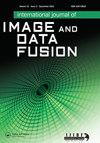基于高性能计算的机器学习城市绿地变化检测:卫星图像数据融合方法
IF 1.8
Q3 REMOTE SENSING
International Journal of Image and Data Fusion
Pub Date : 2020-04-10
DOI:10.1080/19479832.2020.1749142
引用次数: 11
摘要
绿色空间在城市环境中具有重要的环境和生活质量功能。快速变化的城市区域需要连续快速的绿地变化检测。本研究的重点是评估使用GPU的绿色空间变化检测-为时间高效的绿色空间识别和监测。本研究利用卫星影像的时空数据,以支持向量机(SVM)为分类算法,提出了一个绿地分析与变化检测平台。本研究的主要贡献包括融合中分辨率成像光谱辐射计(MODIS)数据集的高光谱信息和LANDSAT 7数据集的高空间信息,实现了除近红外、红、绿波段外的热波段融合。采用该方法计算了孟买大都市区2005-2019年的绿地总面积,并对其变化进行了监测。这篇研究论文讨论了我们的战略发现,并揭示了在15年的过程中,整体绿色空间减少到50%。本文章由计算机程序翻译,如有差异,请以英文原文为准。
Machine learning on high performance computing for urban greenspace change detection: satellite image data fusion approach
ABSTRACT Green spaces serve important environmental and quality-of-life functions in urban environments. Fast-changing urban regions require continuous and fast green space change detection. This study focuses on assessment of green space change detection using GPU- for time efficient green space identification and monitoring. Using spatio-temporal data from satellite images and a support vector machine (SVM) as a classification algorithm, this research proposes a platform for green space analysis and change detection. The main contributions of this research include the fusion of the thermal band in addition to Near infra-red, red, green band with the fusion of high spectral information of the moderate resolution imaging spectroradiometer (MODIS) dataset and high spatial information of the LANDSAT 7 dataset. The novel method is employed to calculate the total green space area in the Mumbai metropolitan area and monitor the changes from 2005–2019. This research paper discusses the findings of our strategy and reveals that over the course of 15 years the overall green space was reduced to 50%.
求助全文
通过发布文献求助,成功后即可免费获取论文全文。
去求助
来源期刊

International Journal of Image and Data Fusion
REMOTE SENSING-
CiteScore
5.00
自引率
0.00%
发文量
10
期刊介绍:
International Journal of Image and Data Fusion provides a single source of information for all aspects of image and data fusion methodologies, developments, techniques and applications. Image and data fusion techniques are important for combining the many sources of satellite, airborne and ground based imaging systems, and integrating these with other related data sets for enhanced information extraction and decision making. Image and data fusion aims at the integration of multi-sensor, multi-temporal, multi-resolution and multi-platform image data, together with geospatial data, GIS, in-situ, and other statistical data sets for improved information extraction, as well as to increase the reliability of the information. This leads to more accurate information that provides for robust operational performance, i.e. increased confidence, reduced ambiguity and improved classification enabling evidence based management. The journal welcomes original research papers, review papers, shorter letters, technical articles, book reviews and conference reports in all areas of image and data fusion including, but not limited to, the following aspects and topics: • Automatic registration/geometric aspects of fusing images with different spatial, spectral, temporal resolutions; phase information; or acquired in different modes • Pixel, feature and decision level fusion algorithms and methodologies • Data Assimilation: fusing data with models • Multi-source classification and information extraction • Integration of satellite, airborne and terrestrial sensor systems • Fusing temporal data sets for change detection studies (e.g. for Land Cover/Land Use Change studies) • Image and data mining from multi-platform, multi-source, multi-scale, multi-temporal data sets (e.g. geometric information, topological information, statistical information, etc.).
 求助内容:
求助内容: 应助结果提醒方式:
应助结果提醒方式:


